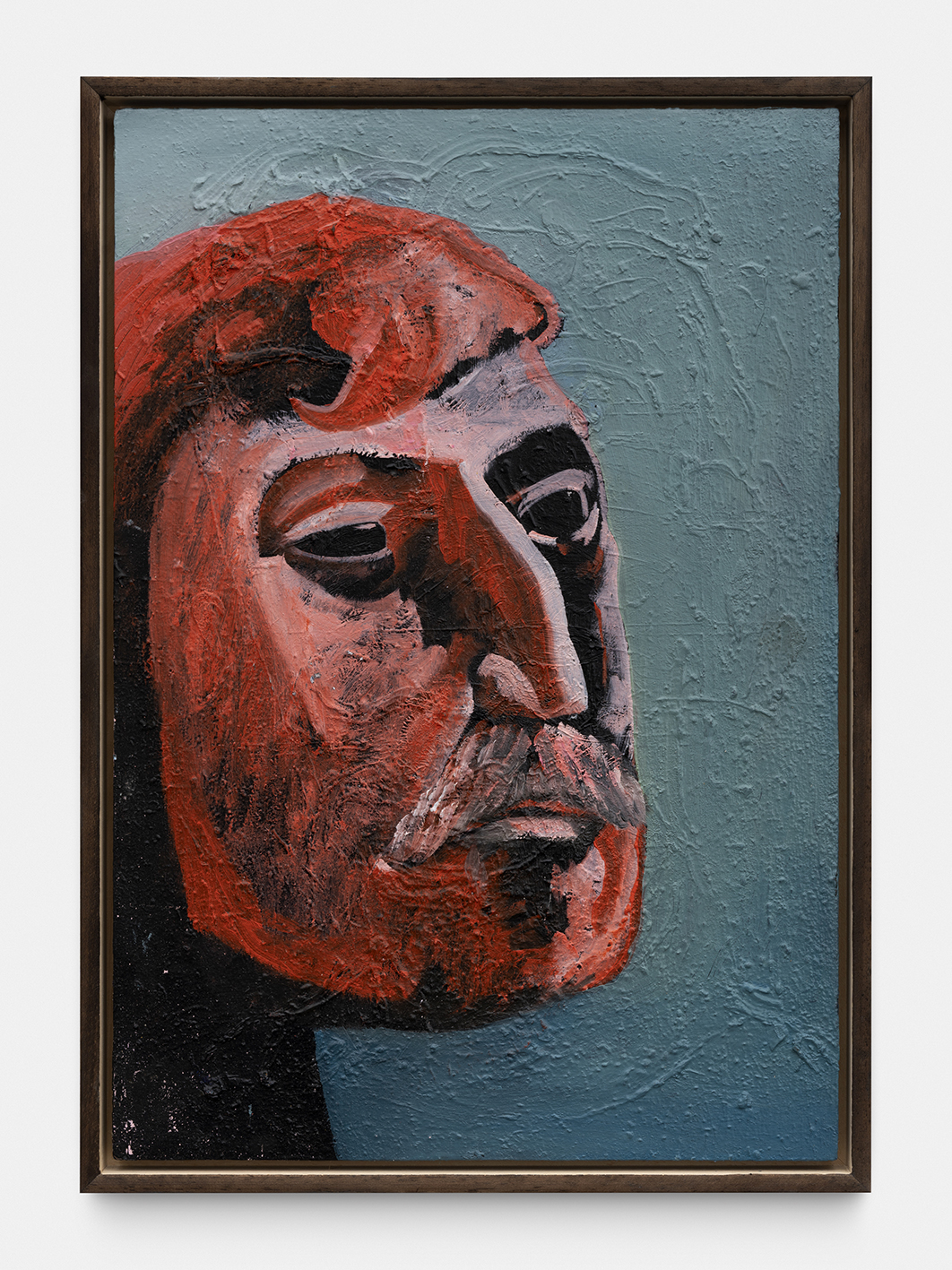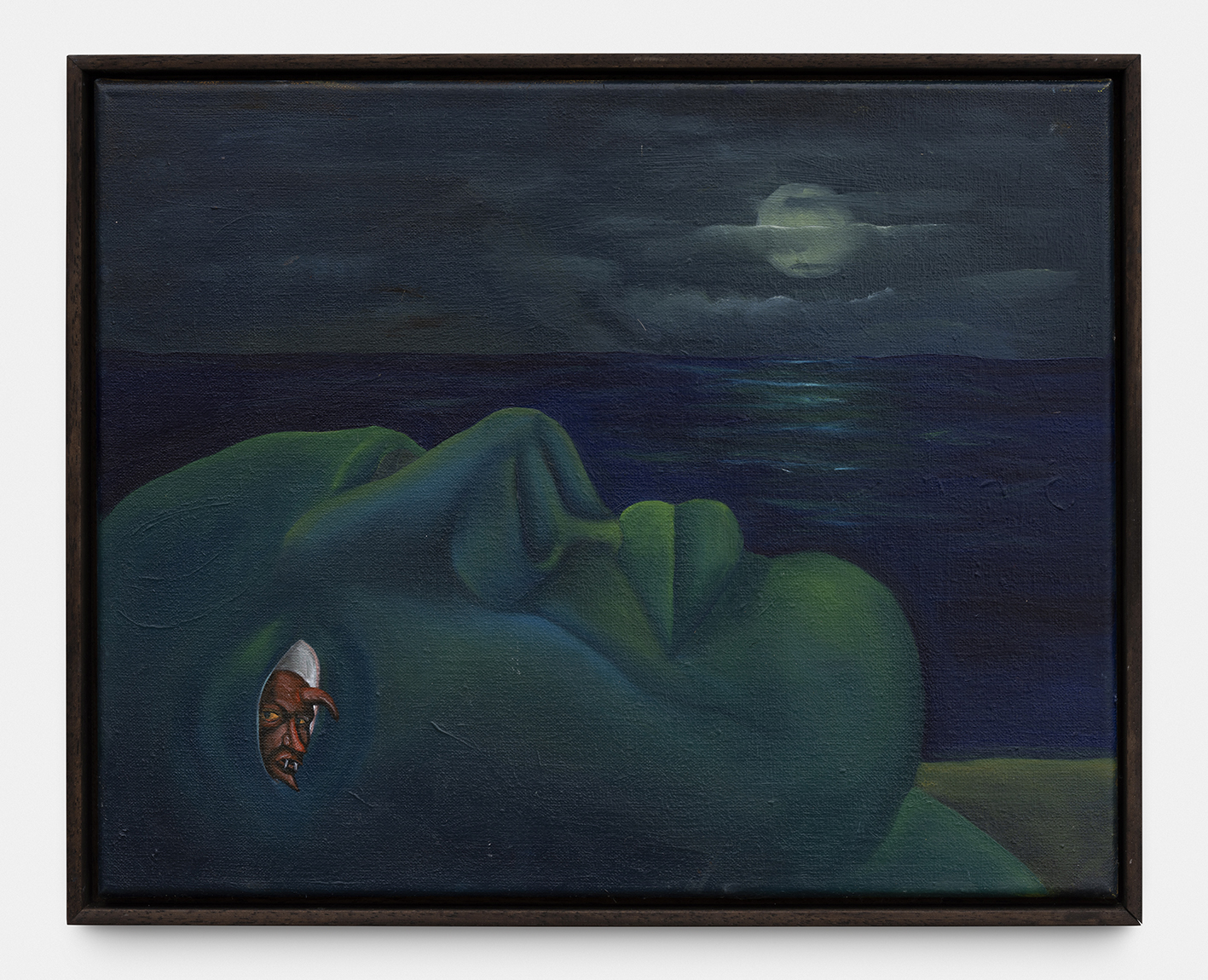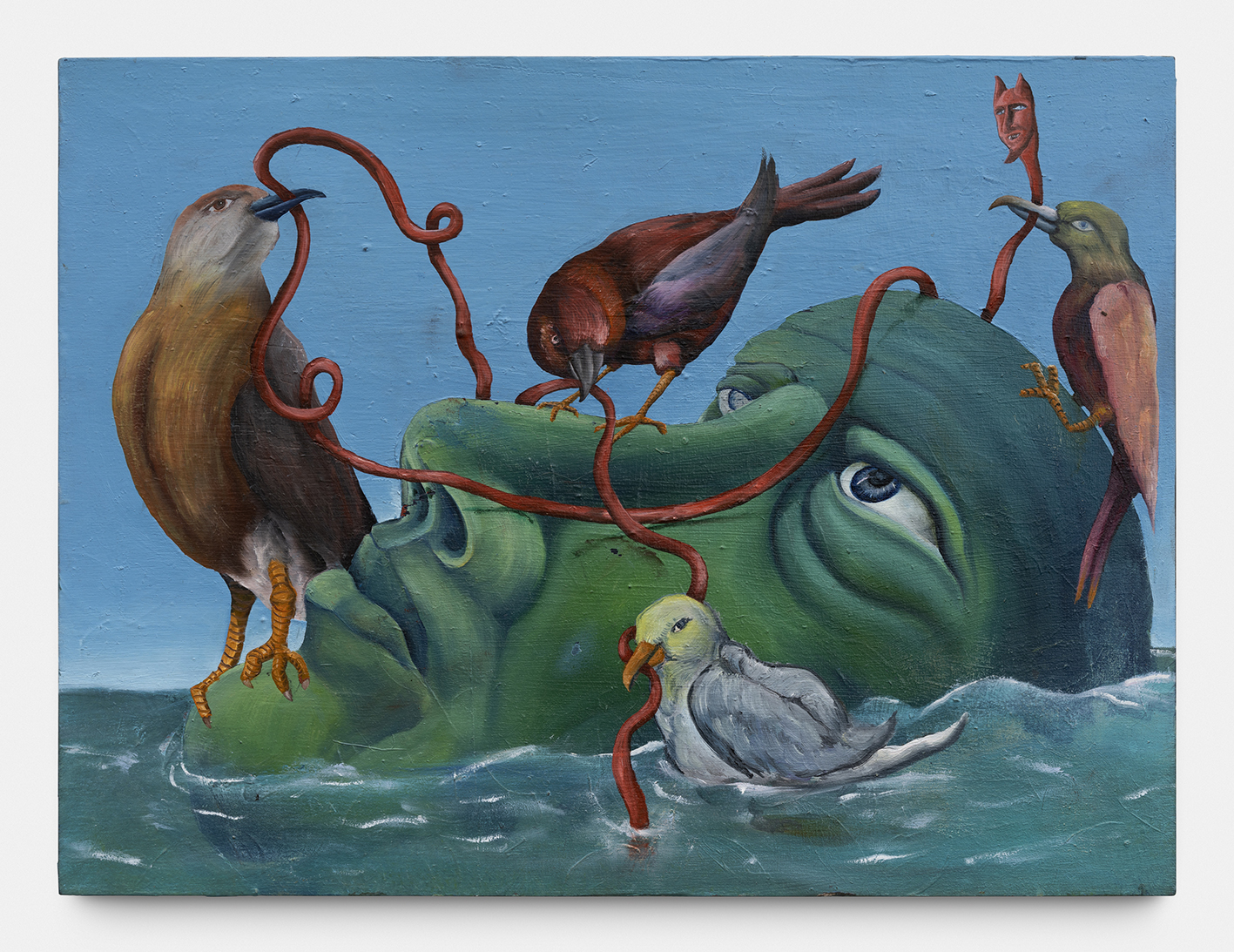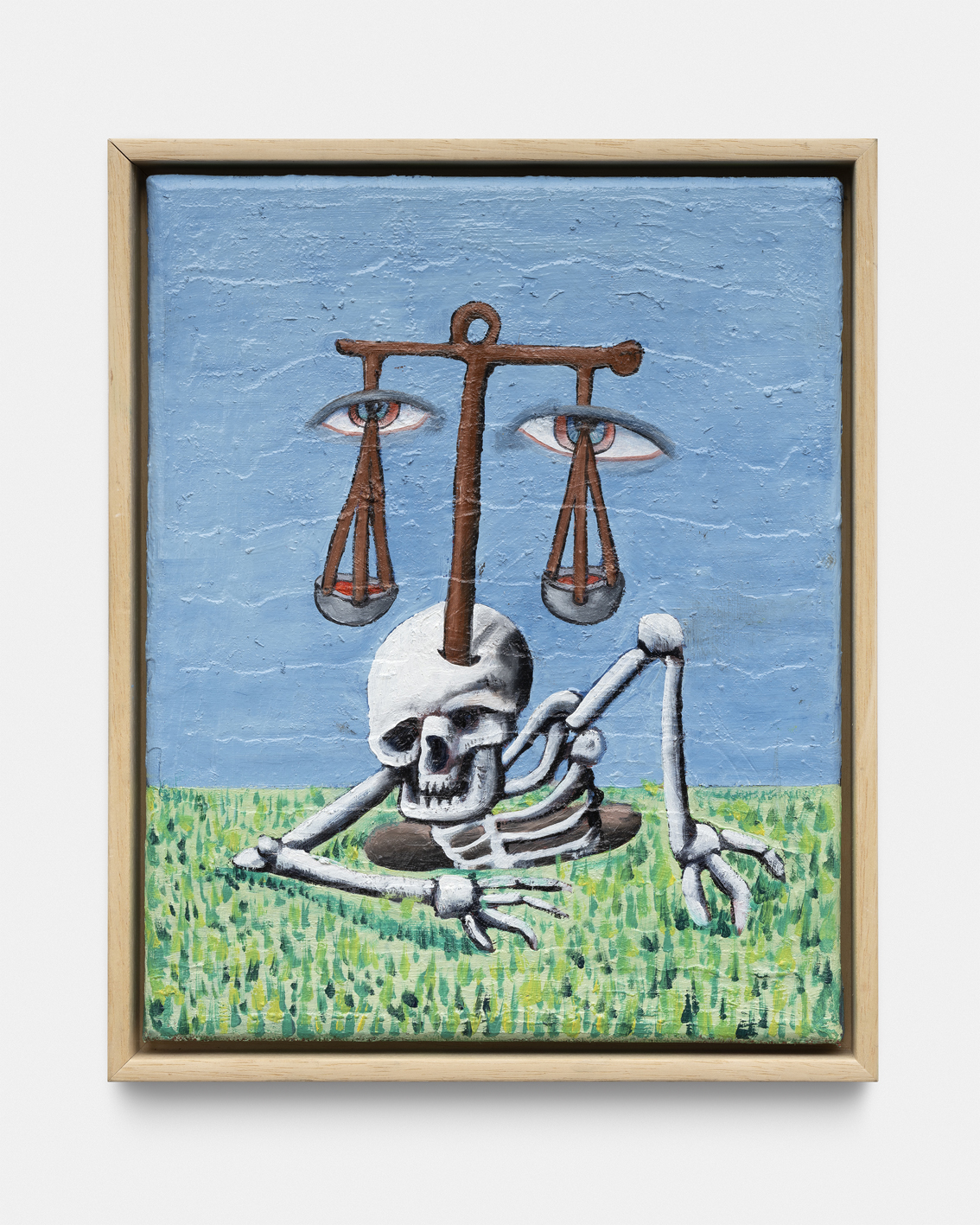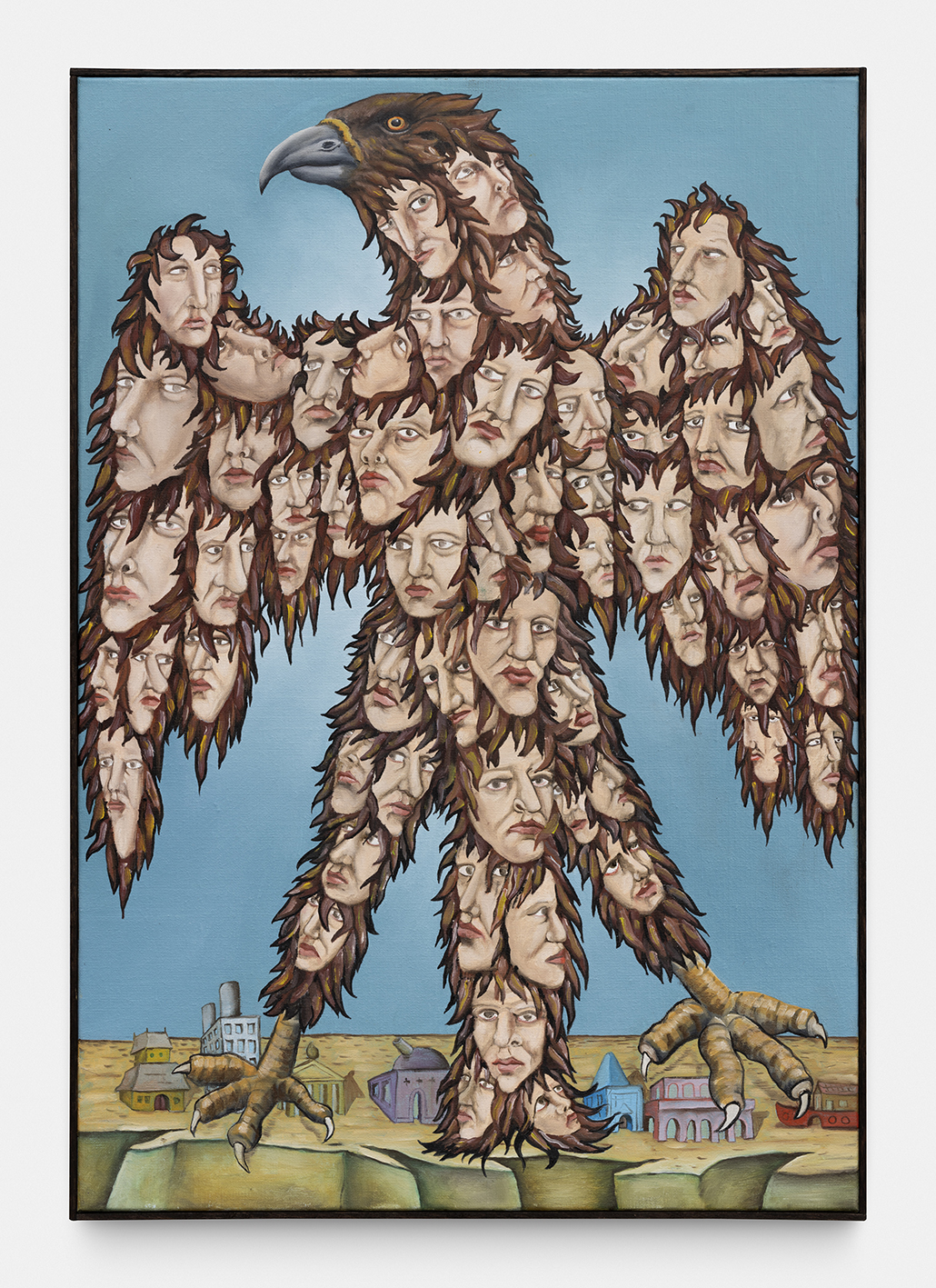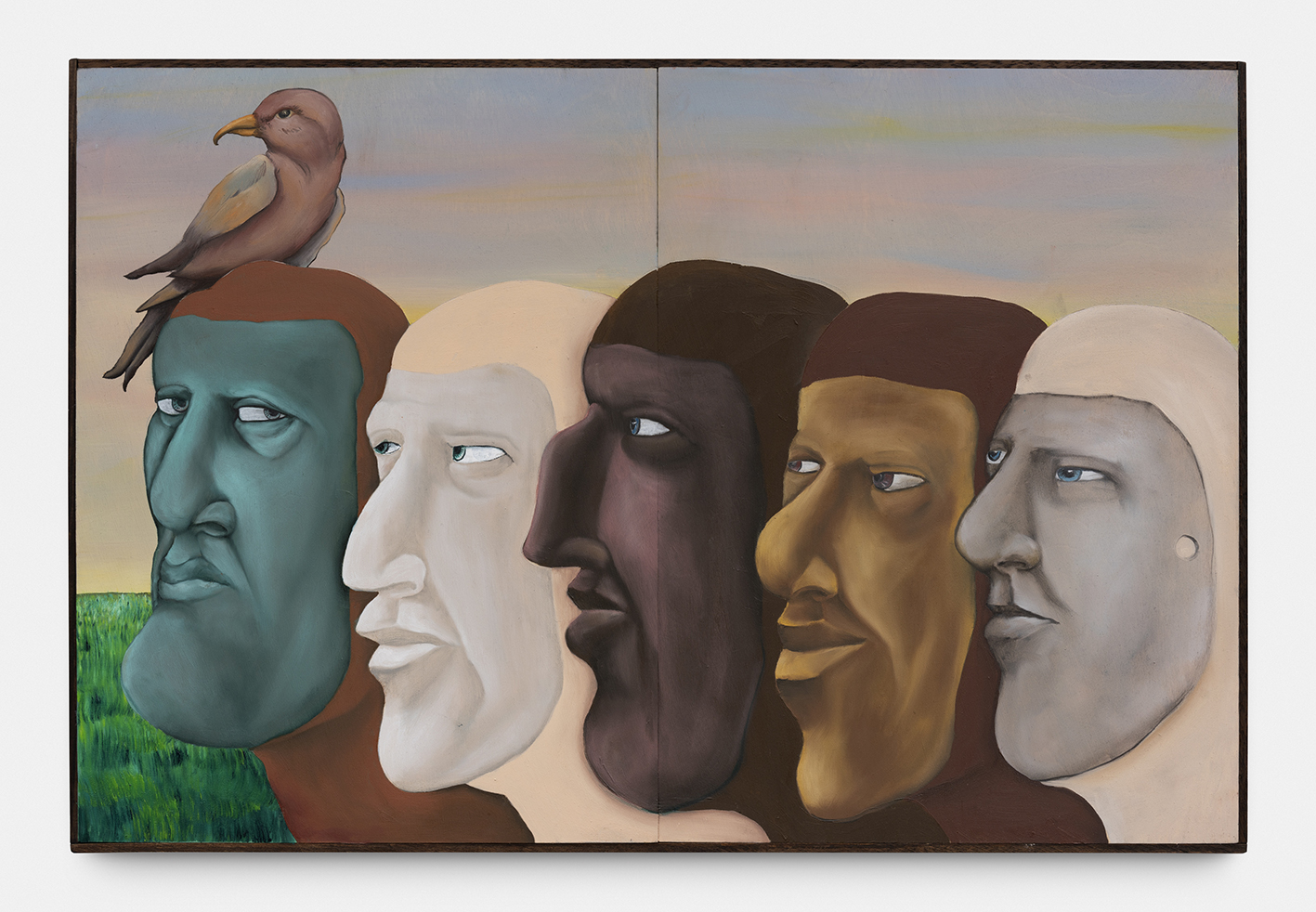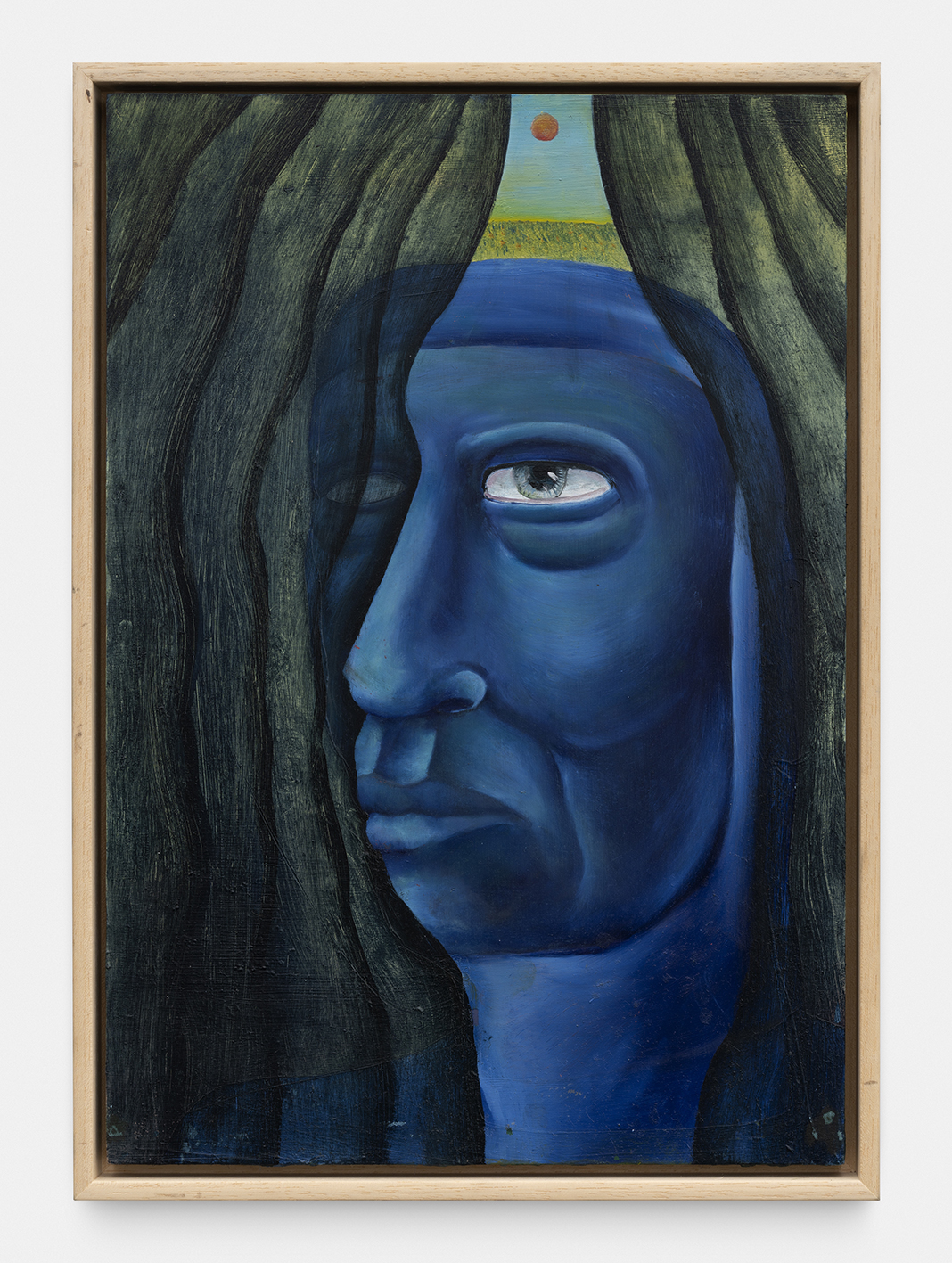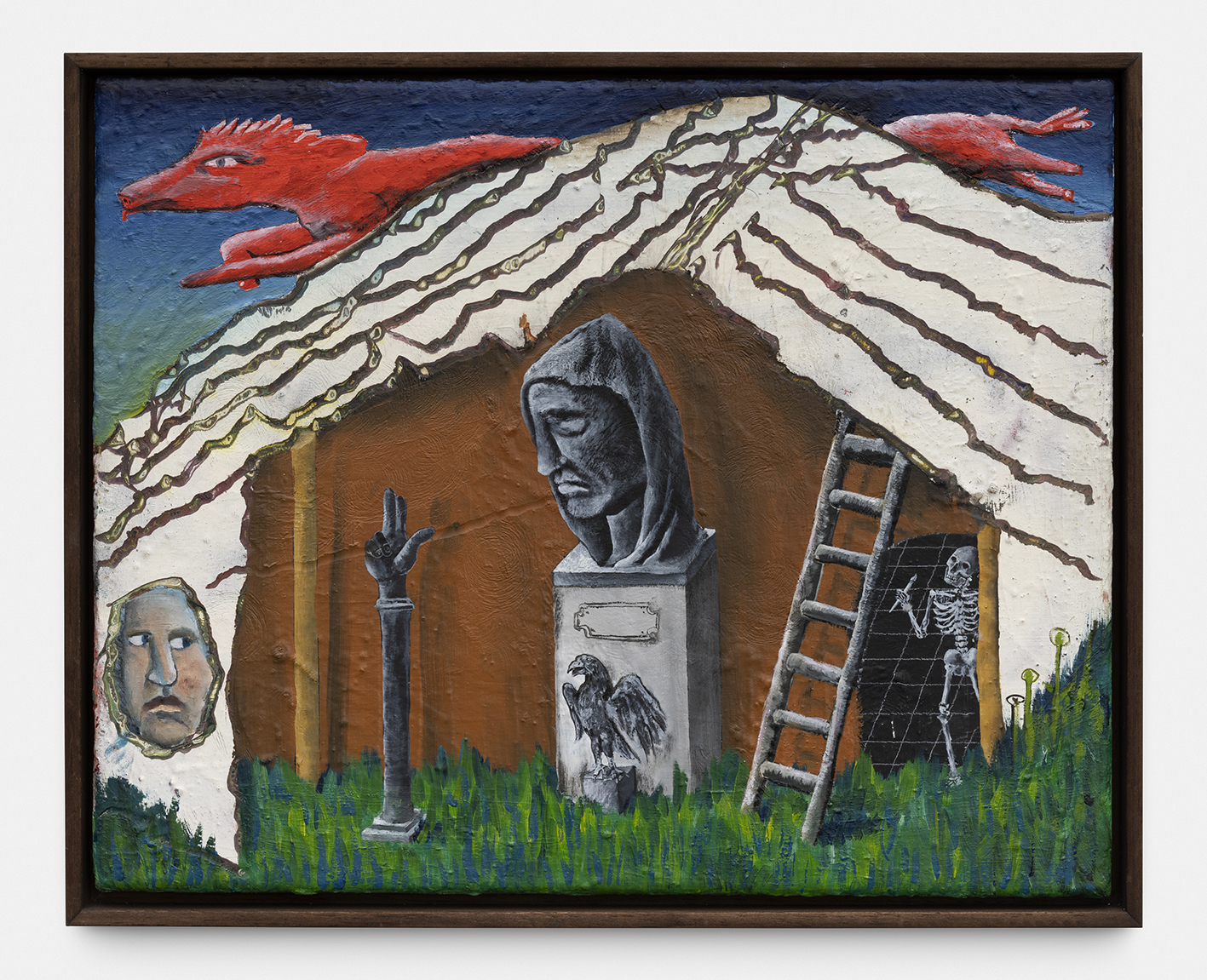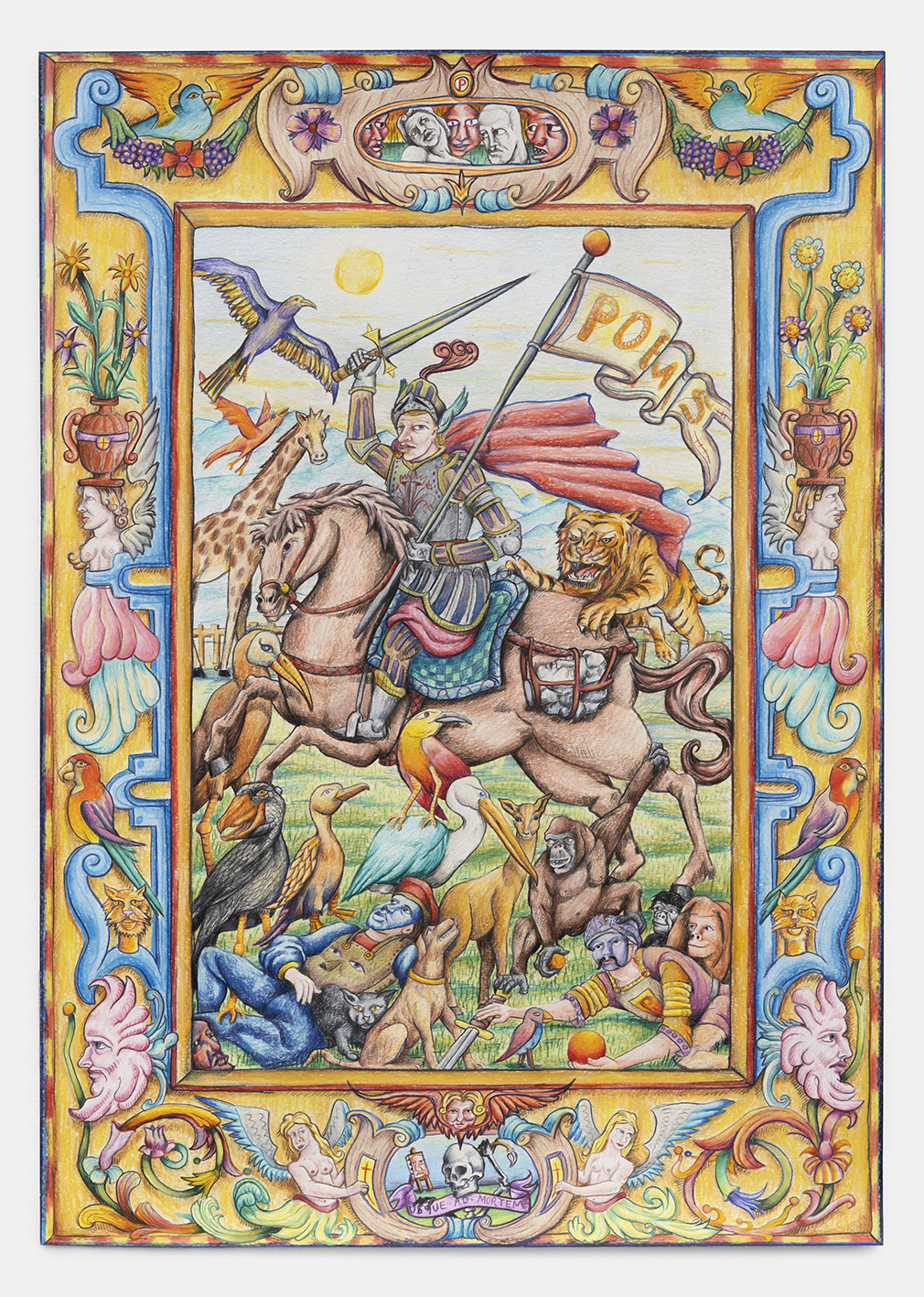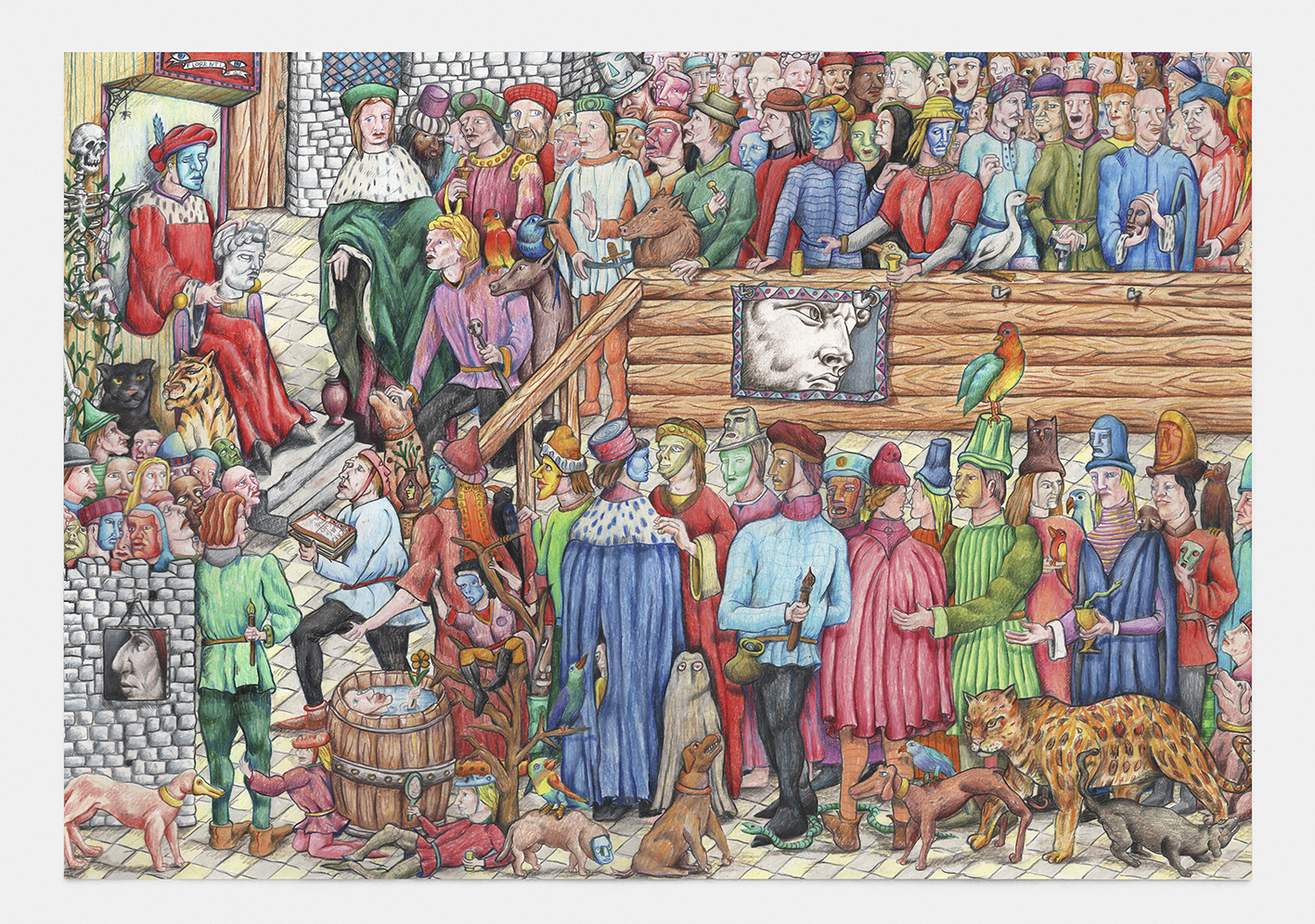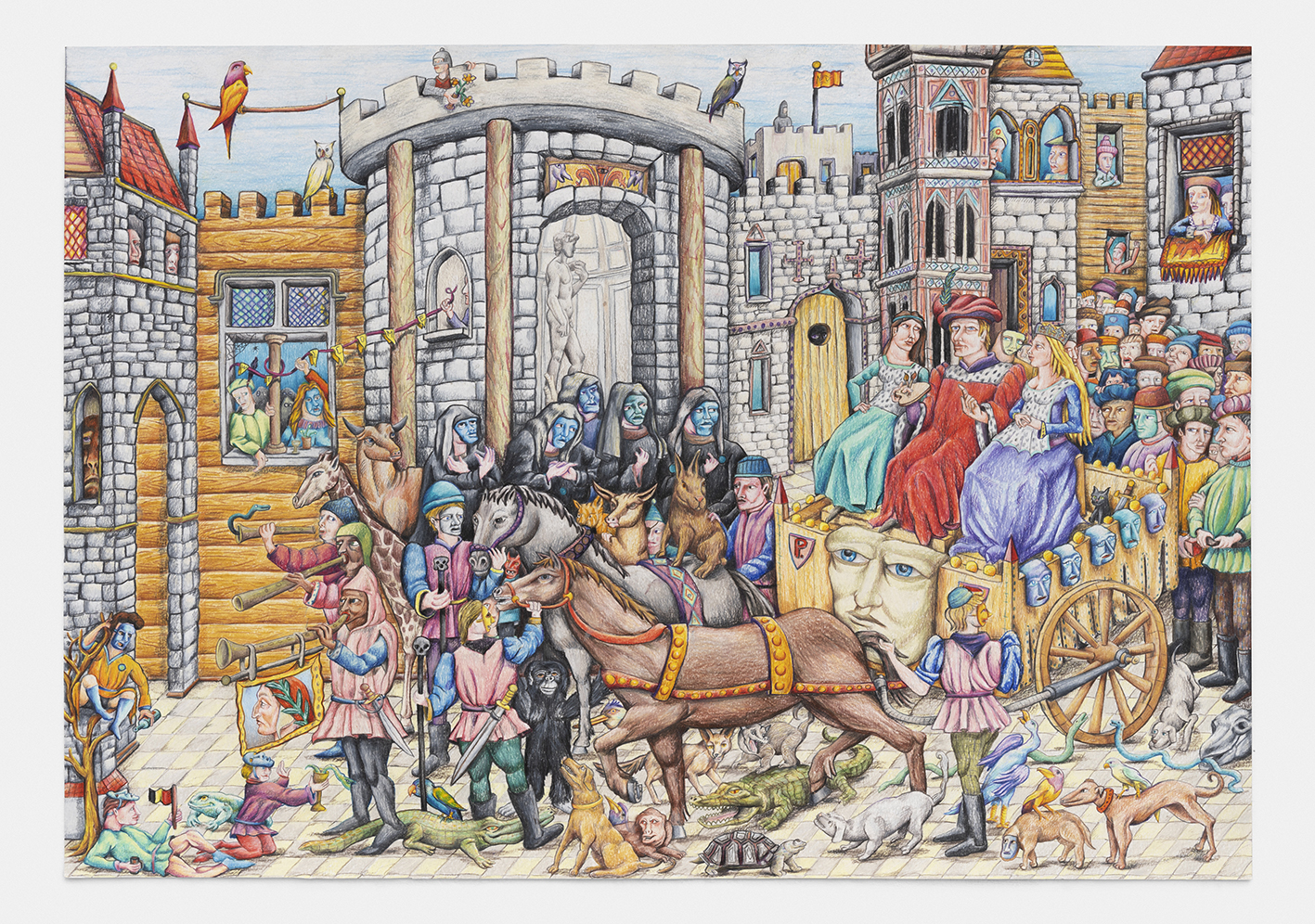Tom Poelmans – Next time you see me, it won’t be me
Tom Poelmans
Next time you see me, it won’t be me
| (Past) | 22.01.202222.01.22 — 19.03.202219.03.22 |
|---|---|
| (Gallery) | Rue de Livourne 32 Livornostraat |
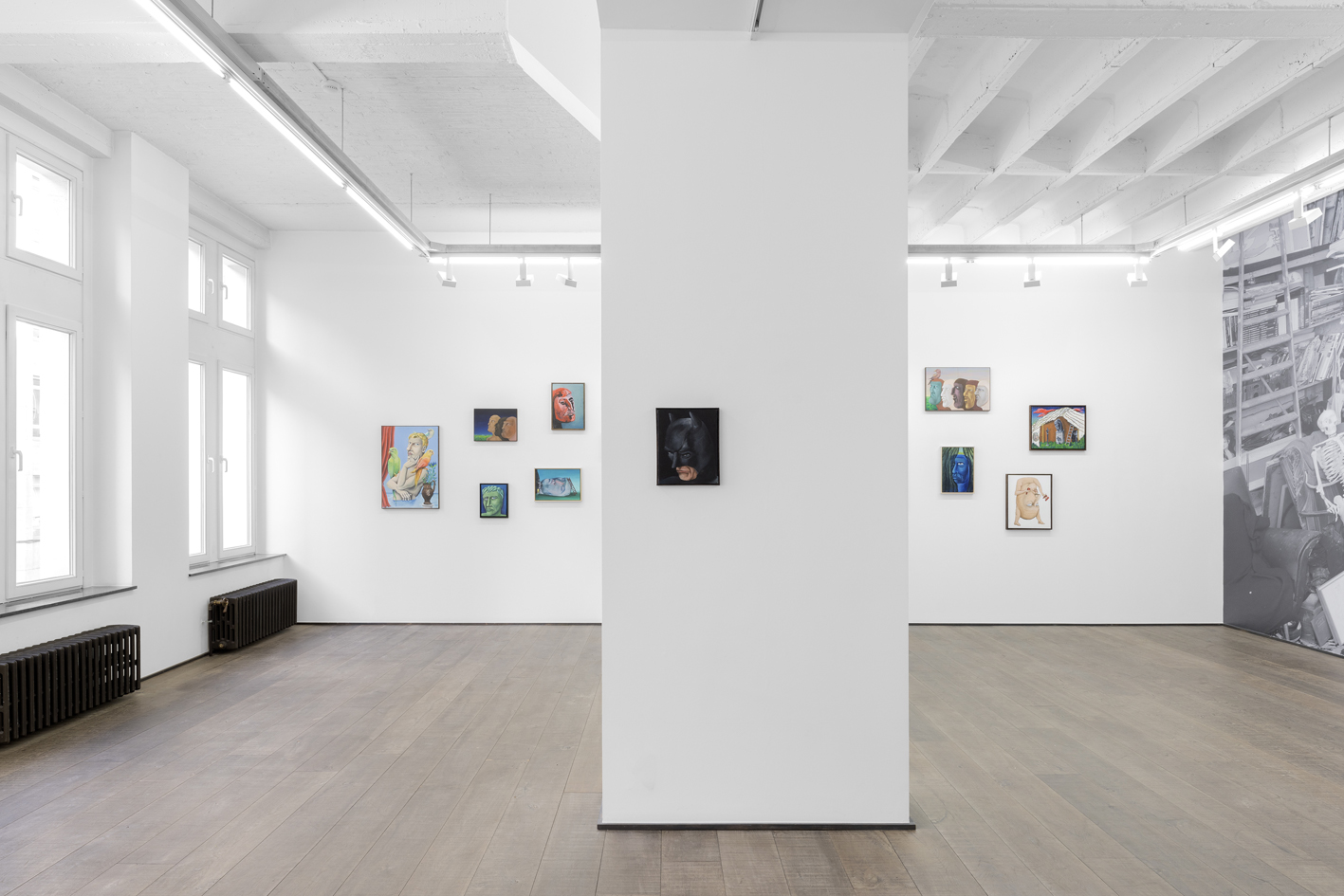
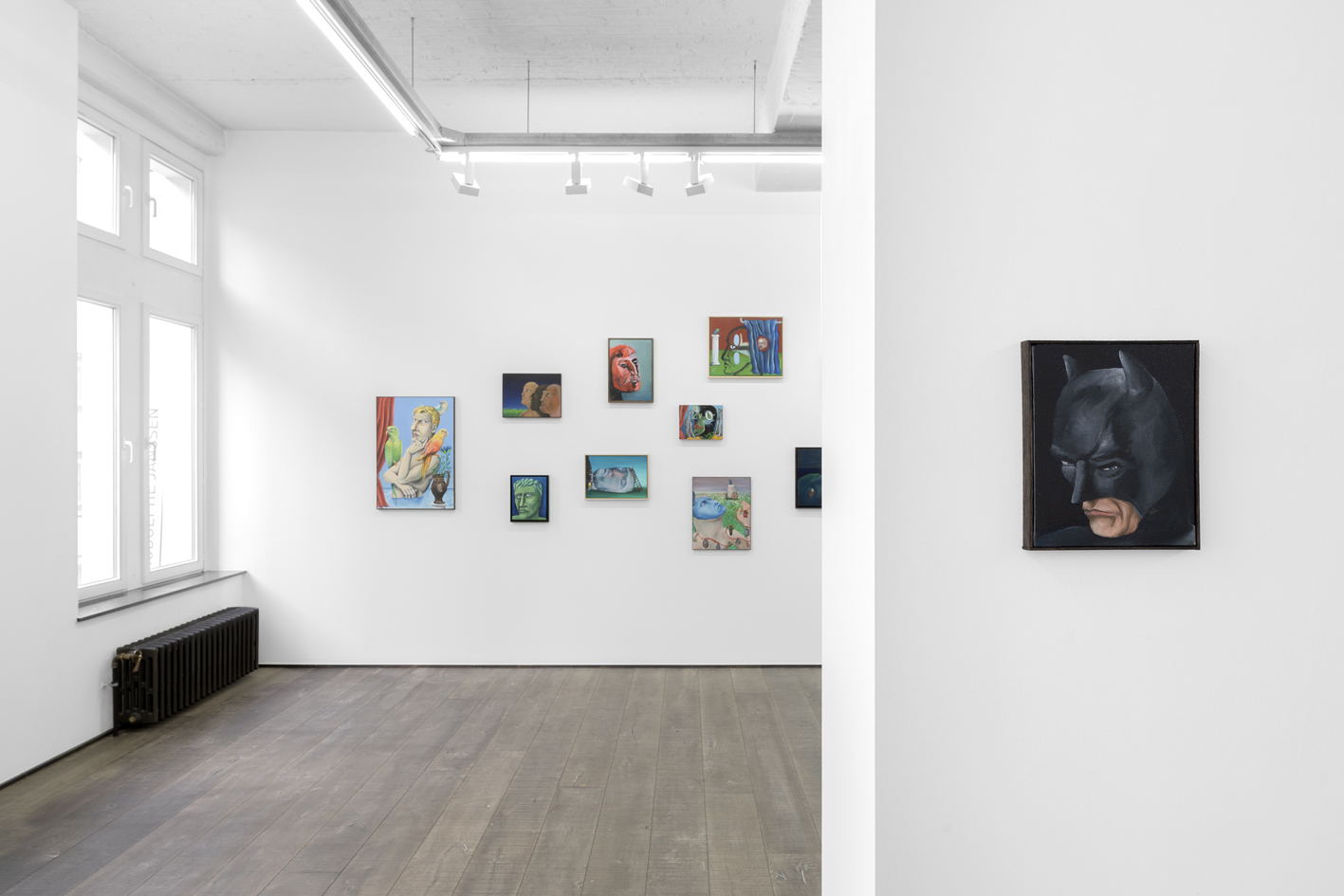
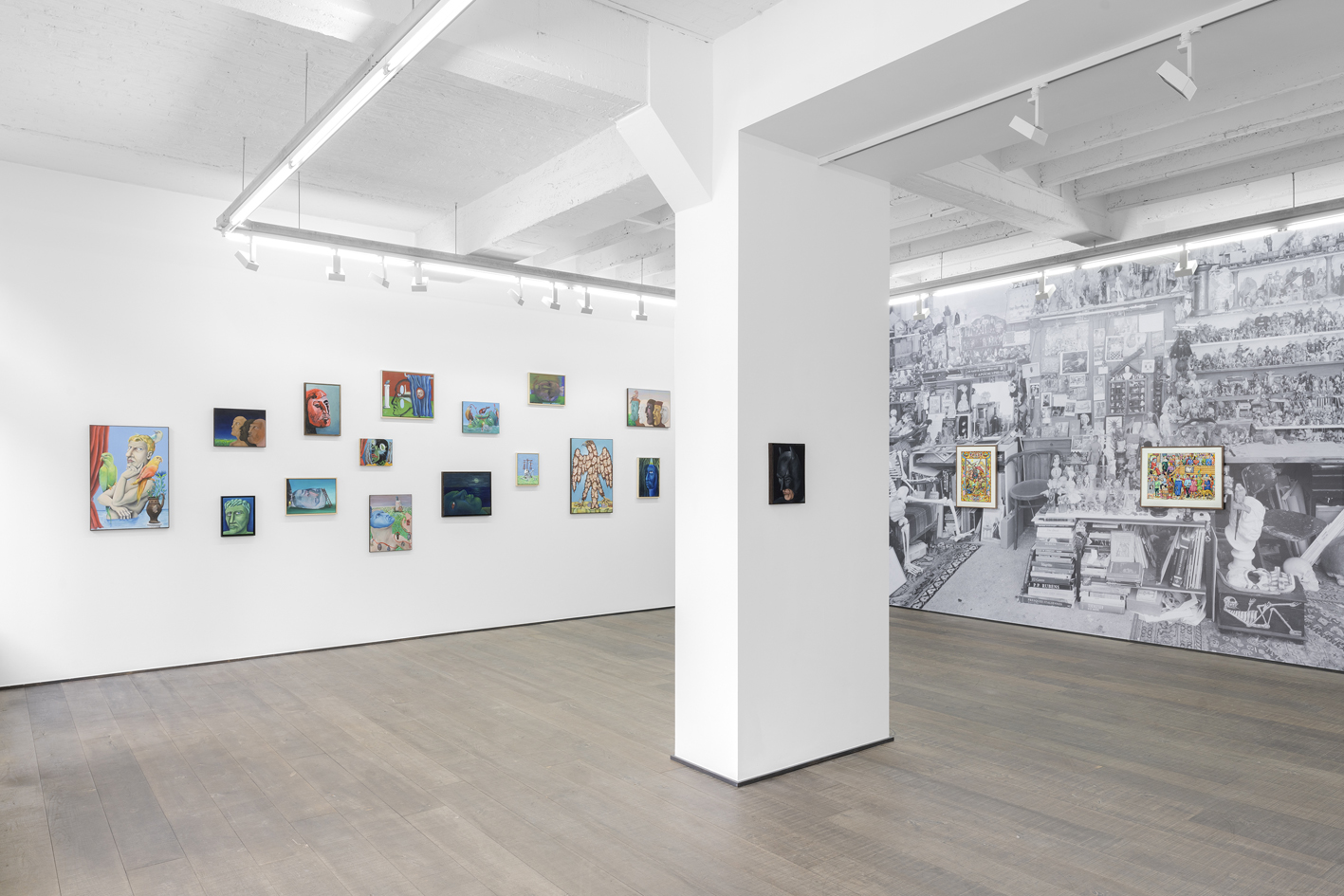
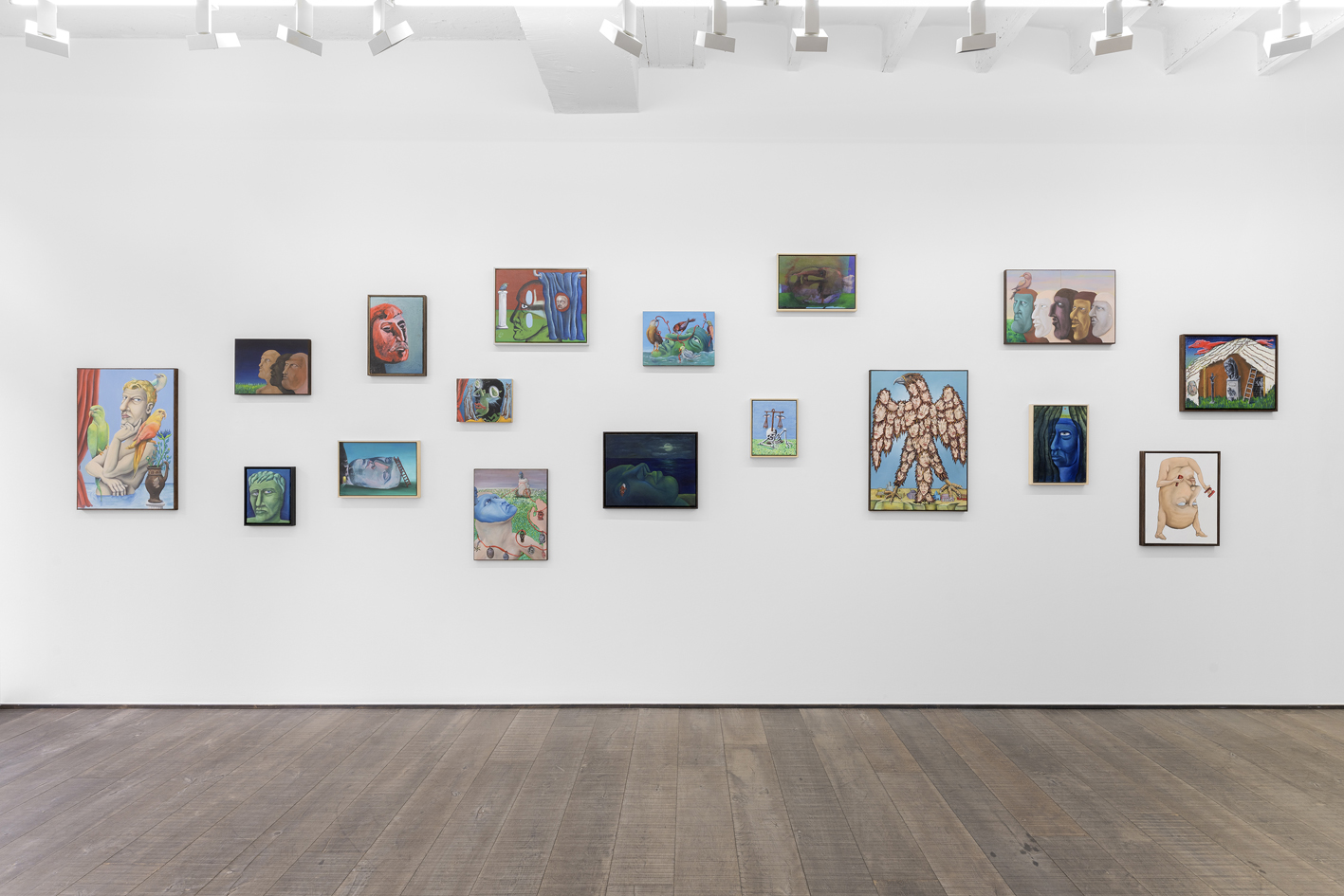
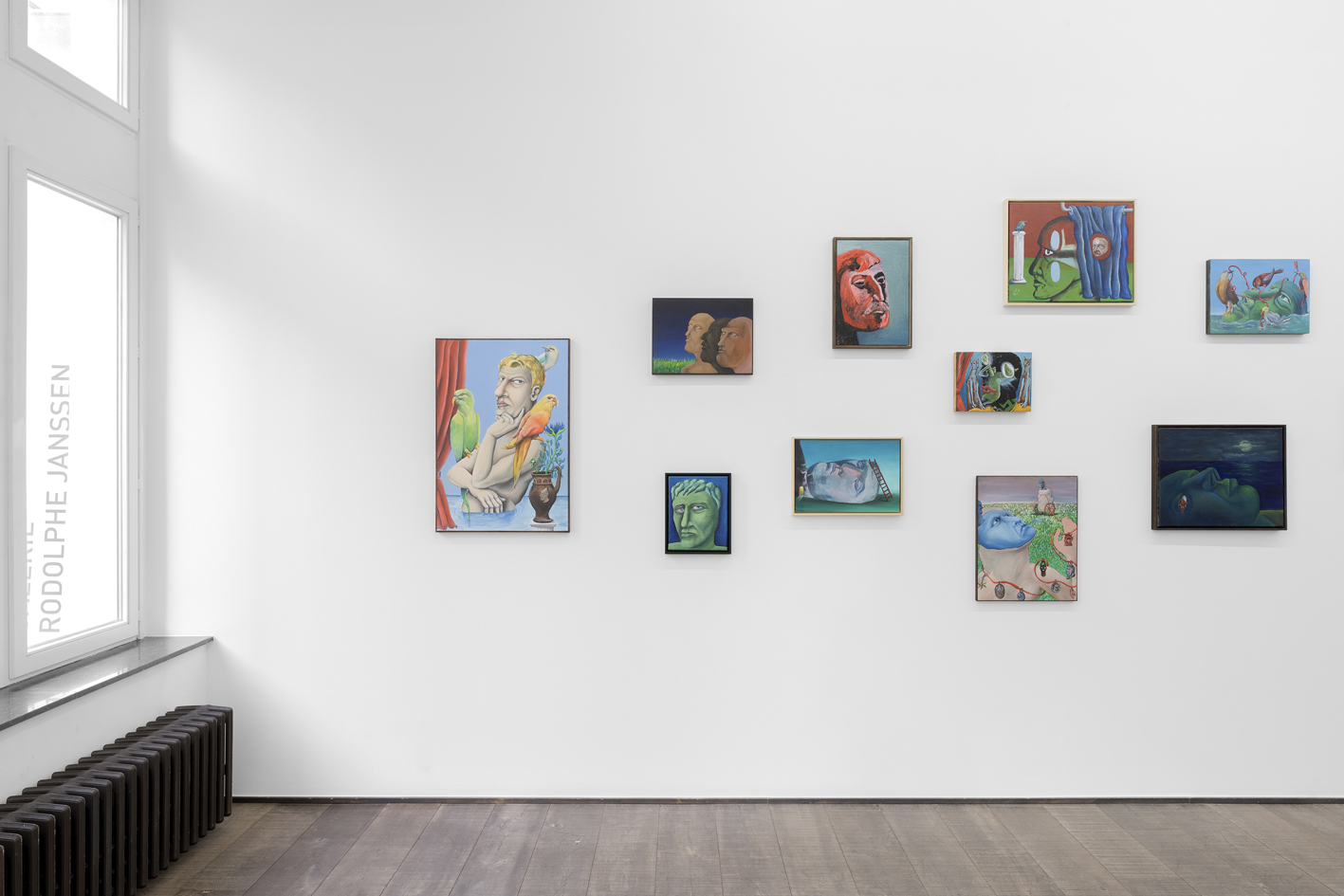
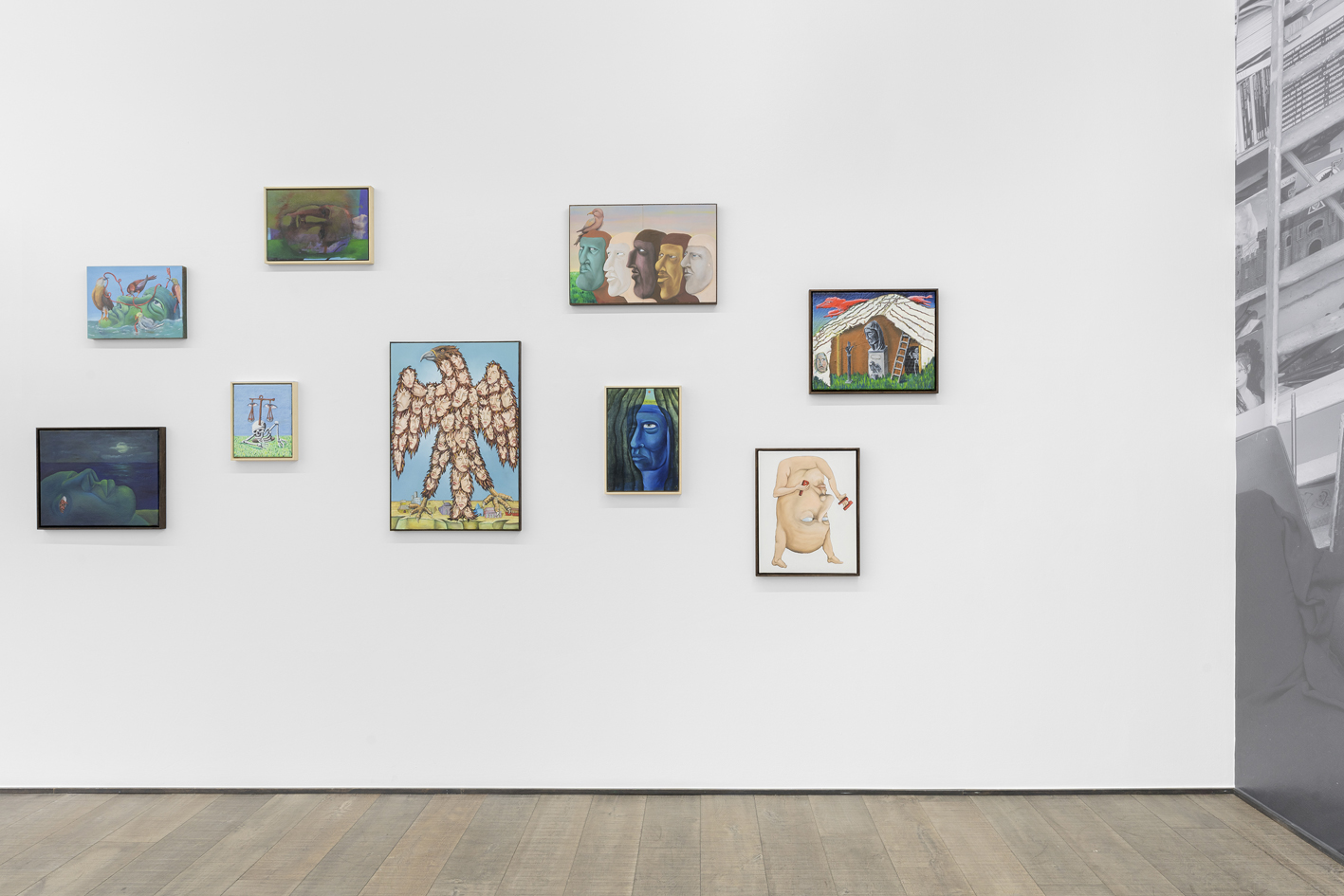
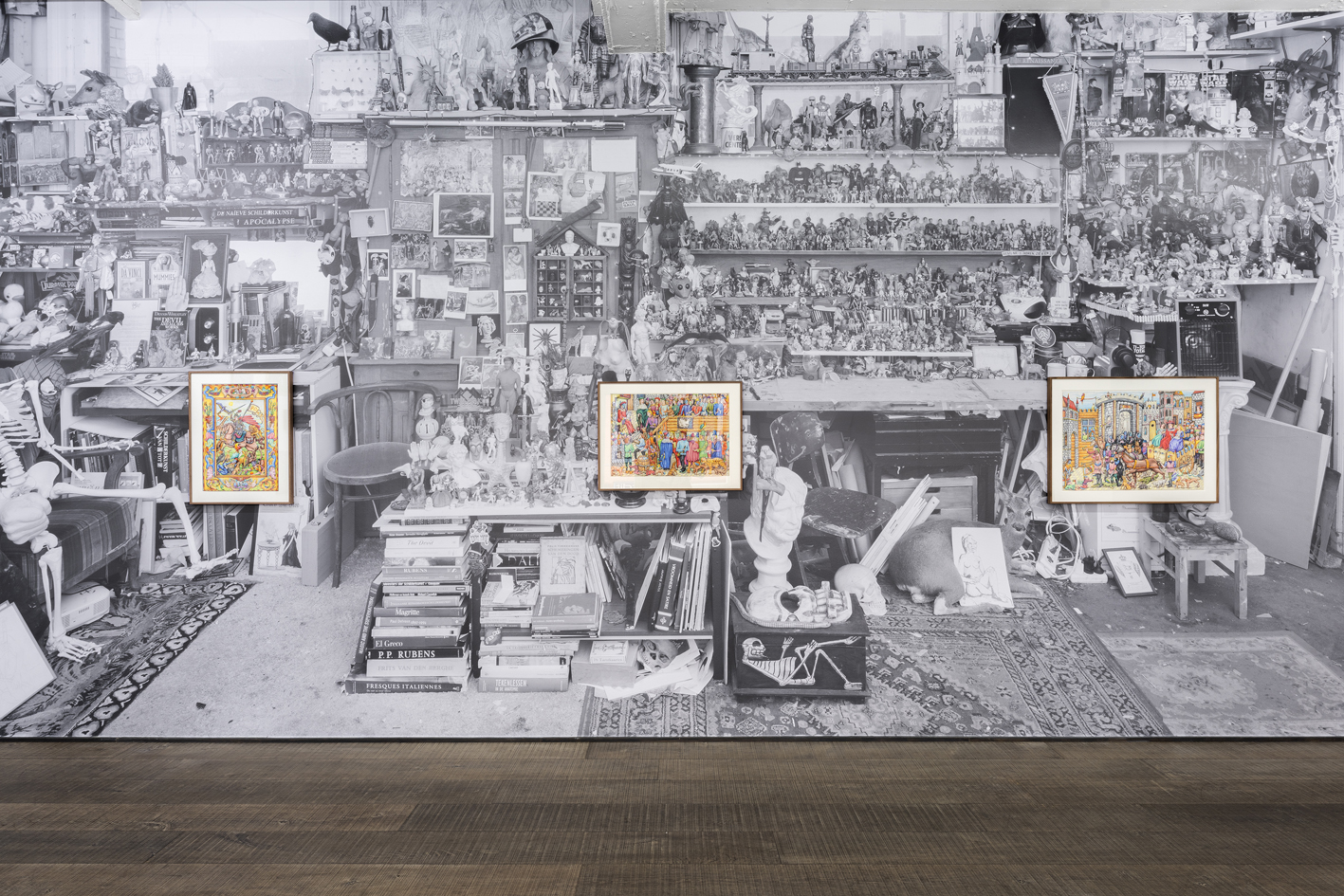
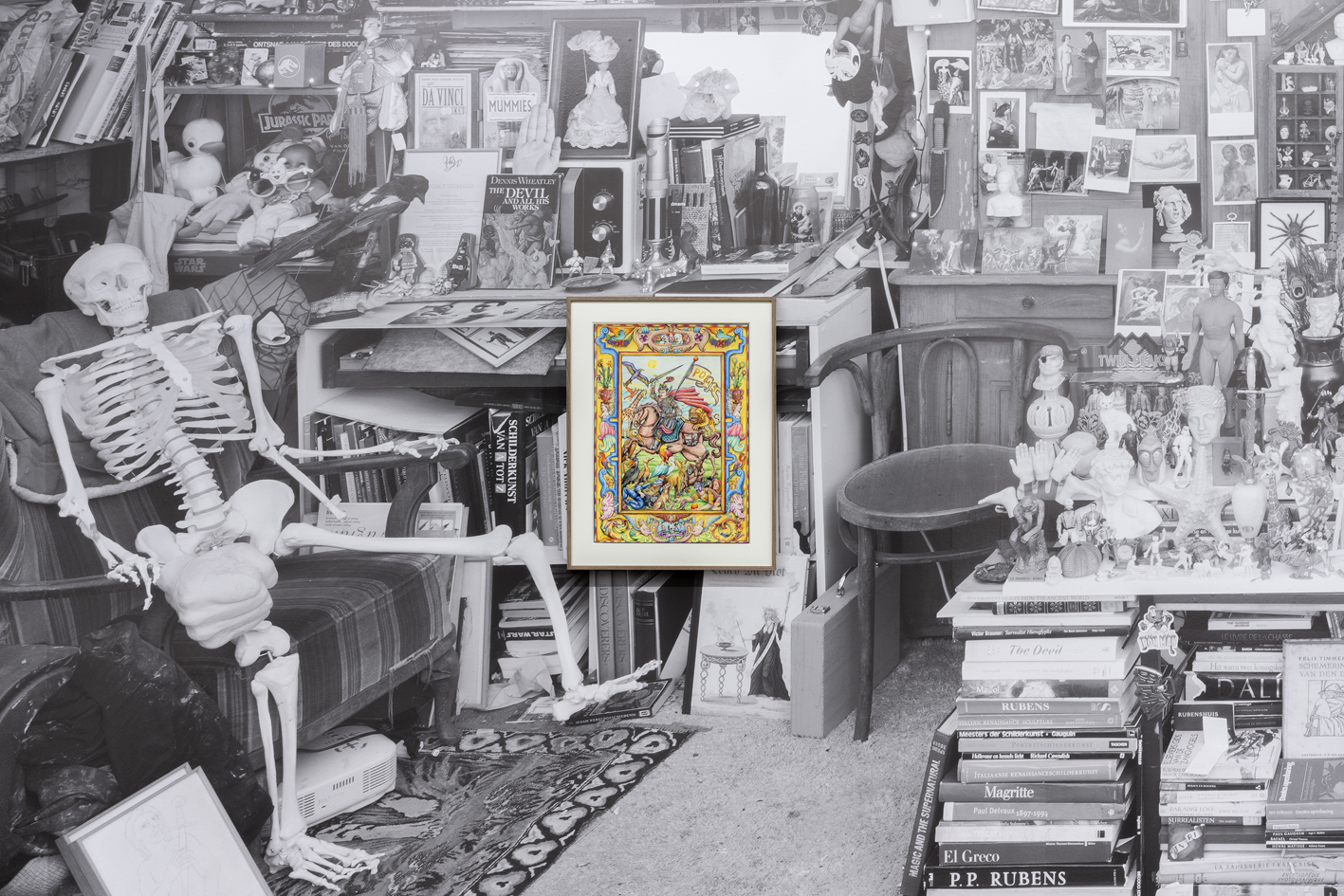
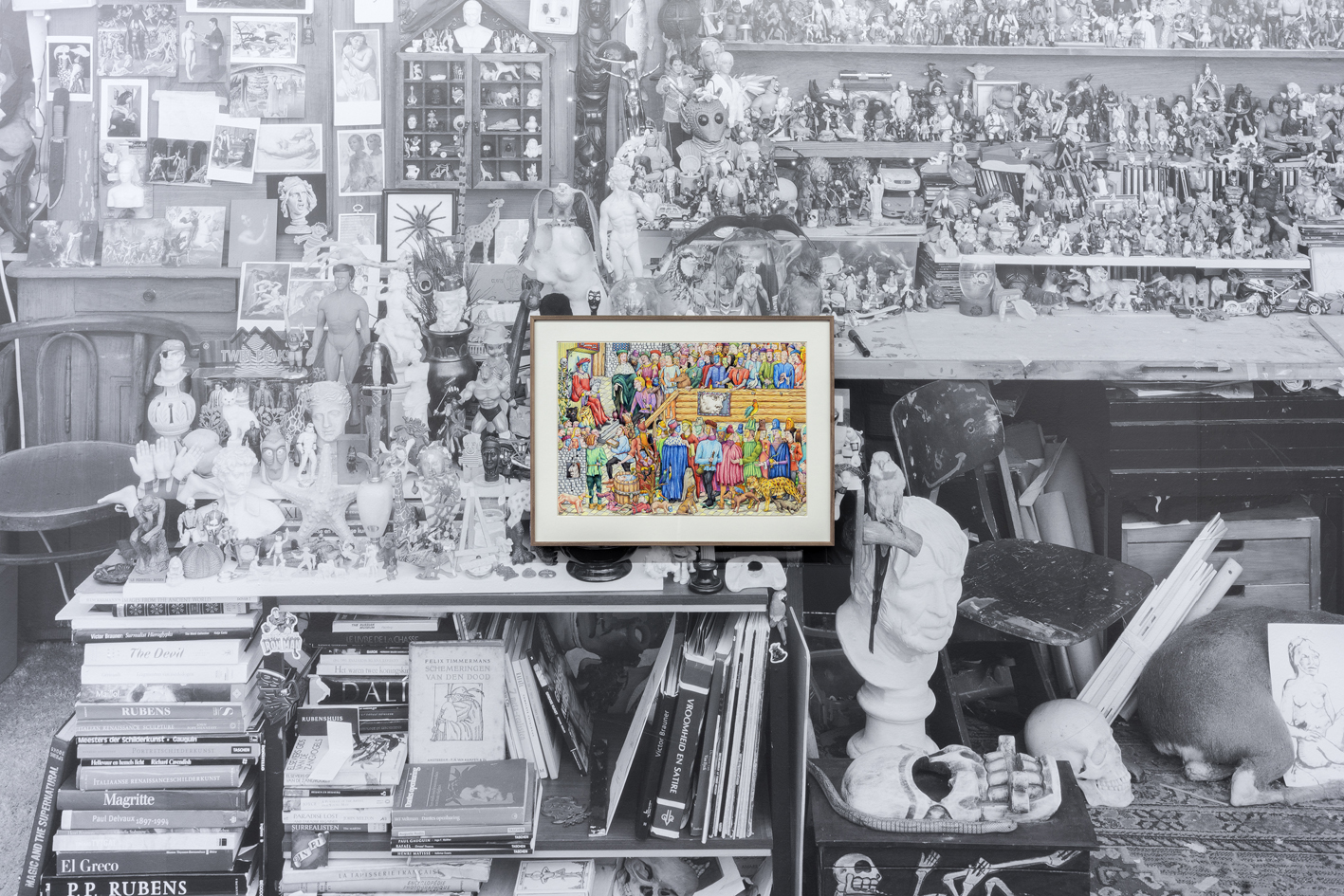
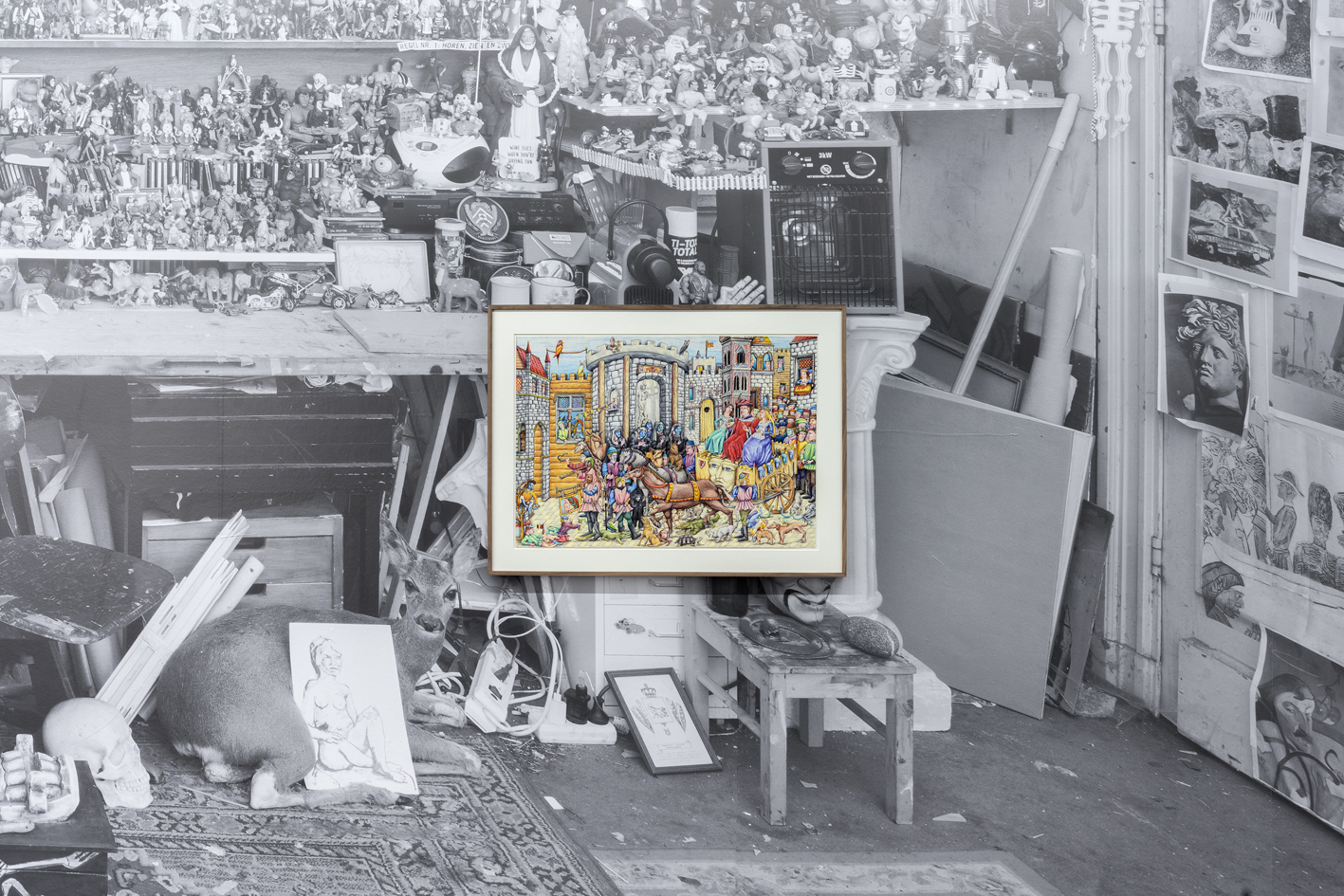
(01/10)Exhibition views
In a triptych of colored pencil drawings we see Tom Poelmans arriving through the gates of Florence dressed as a king. He is festively welcomed by all kinds of strange creatures, masked or not. We recognize, amongst others, Dante, David by Michelangelo and Giotto’s Bell Tower. In the second drawing, Poelmans sits on a throne like a king. People and animals wriggle forward to catch a glimpse of him. Like many of those depicted, Poelmans is wearing a mask. He holds a head which could be that of David. In the third drawing we see Poelmans, a knight, riding away happily with the head tied to his horse. Confidently, he rides into new adventures or drawings, not even a tiger can stop him. Like the roles that Poelmans portrays himself in here, the head represents the facade or mask with which we show ourselves to the outside world. It also symbolizes the beauty and impressions that Poelmans takes from
our rich past.
Poelmans’ recent drawings and paintings lead us to the human psyche. He paints self-portraits, alter-egos in search of identity. Am I the image or the mask that I parade? Poelmans’ figures wear masks without having real heads, where their faces seem separated from the rest of their body. As human beings we wear a mask for the role we are constantly playing. ‘Next time you see me, it won’t be me’ is the title of Poelmans’ second solo exhibition at rodolphe janssen. Depending on who or where we are, we unconsciously and immediately fall into these roles. We change constantly and effortlessly. Poelmans paints a blue mask on a stout neck. Around his upper body winds a red thread with pendants, including Dante and the devil. It is the thread on which all our masks or psyches hang, and it symbolizes how these patterns of roles form the thread of our lives. As a viewer, through his work we get the perspective of how we organize ourselves in time and space. In his earlier abstract works, Poelmans played with grids, colors and patterns as a metaphor for how we subdivide and interpret reality. His current figurative work similarly shows us how we view the world through these arrangements and patterns. Only now Poelmans uses a narrative visual language. We cannot help but organize all our plans and projects in time, so our roles are also situated in it. We shift from one perspective to another. Poelmans incorporates in his imagery a clock, a skeleton or a skull with the inscription ‘usque ad mortem’. Everything is transient. In Poelmans’ work we often recognize the masquerade as well as the theme of the Dance Macabre, formally found in works by Bosch, Breughel and later Ensor.
In these figurative works, Poelmans explores the human psyche using age-old, charged imagery. They show us the source of ourselves and that of our art historical past.
Poelmans goes to Florence. The Renaissance iconography that can be found there offers a wealth of human knowledge and techniques. Poelmans additionally refers to book illumination from the Middle Ages. He has a weakness for the imperfections in proportion and perspective which can be found both in early Renaissance paintings and throughout the history of the illuminated manuscript. From the latter, ancient symbols such as scales stand for the polarity in everything and how we seek balance. The sources he uses are however much broader; along with the artists and iconography of the past, his personal museum of figurines, models and animals, which are displayed in his studio find their way into the microcosms of his painted worlds. Poelmans draws and paints metaphysical figures and forms. We read them as recognizable: portraits, curtains or birds, but they stand for much more. They are depicted within a specific decor, dependent on the roles they find themselves in. This is how Poelmans paints himself in a portrait adopting the exact dimensions of the Mona Lisa, his gaze fixed on the observer. Here he stands in a sea of possibilities, where as an artist he has the freedom to make choices. The perching birds symbolize that freedom. They are also the ones capable of seeing the bigger picture, thus that we are assuming all these different roles. In another painting, an eagle, made up of countless faces, functions in the very same way. Finally, Poelmans paints a composition of several figures standing in a row, these could be the various alter-egos of the same character. Another bird sits on the figure with the blue face. It is the one
that sees through our psyche and understands our human thought pattern, the way we look and are in the world.
November 2021, Indra Devriendt
Artworks
(12)-
![Tom Poelmans, Freedomfighter]()
(Artist) Tom Poelmans (Title) Freedomfighter (Year) 2021 (medium) Oil on canvas (Dimensions) 78.5 x 54 cm (framed); 30 7/8 x 21 1/4 in (Reference) Poe077 -
![Tom Poelmans, Paul Gauguin]()
(Artist) Tom Poelmans (Title) Paul Gauguin (Year) 2021 (medium) Oil on panel (Dimensions) 44.5 x 31.8 cm (framed); 17 1/2 x 12 1/2 in (Reference) TPoe072 -
![Tom Poelmans, Nightcrawler]()
(Artist) Tom Poelmans (Title) Nightcrawler (Year) 2021 (medium) Oil on canvas (Dimensions) 42.2 x 52.2 cm (framed); 16 5/8 x 20 1/2 in (Reference) TPoe067 -
![Tom Poelmans, The Gathering]()
(Artist) Tom Poelmans (Title) The Gathering (Year) 2021 (medium) Oil on panel (Dimensions) 30 x 40 cm;
11 3/4 x 15 3/4 in(Reference) TPoe063 -
![Tom Poelmans, Time’s best friend]()
(Artist) Tom Poelmans (Title) Time’s best friend (Year) 2011-2021 (medium) Oil on canvas (Dimensions) 32.8 x 26.8 cm (framed); 12 7/8 x 10 1/2 in (Reference) TPoe074 -
![Tom Poelmans, One bird to rule them all]()
(Artist) Tom Poelmans (Title) One bird to rule them all (Year) 2021 (medium) Oil on canvas (Dimensions) 78.5 x 54 cm (framed); 30 7/8 x 21 1/4 in (Reference) TPoe076 -
![Tom Poelmans, The sixth sense]()
(Artist) Tom Poelmans (Title) The sixth sense (Year) 2021 (medium) Oil on panel (Dimensions) 61 x 41 cm (framed); 24 1/8 x 16 1/8 in (Reference) TPoe075 -
![Tom Poelmans, Lockdownlook]()
(Artist) Tom Poelmans (Title) Lockdownlook (Year) 2021 (medium) Oil on panel (Dimensions) 44.5 x 31.8 cm (framed); 17 1/2 x 12 1/2 in (Reference) TPoe071 -
![Tom Poelmans, Studio from the past]()
(Artist) Tom Poelmans (Title) Studio from the past (Year) 2012-2021 (medium) Oil on canvas (Dimensions) 42 x 53.8 cm (framed); 16 1/2 x 21 1/8 in (Reference) TPoe079 -
![Tom Poelmans, On the way to utopia]()
(Artist) Tom Poelmans (Title) On the way to utopia (Year) 2021 (medium) Coloured pencil on paper (Dimensions) 65 x 49.8 cm (framed); 25 5/8 x 19 5/8 in (Reference) TPoe081 -
![Tom Poelmans, He who tells the the story sits on the throne]()
(Artist) Tom Poelmans (Title) He who tells the the story sits on the throne (Year) 2021 (medium) Coloured pencil on paper (Dimensions) 53 x 70 cm (framed); 20 7/8 x 27 1/2 in (Reference) TPoe083 -
![Tom Poelmans, The happy entry of prince Poelmans at the city of earthly delights]()
(Artist) Tom Poelmans (Title) The happy entry of prince Poelmans at the city of earthly delights (Year) 2021 (medium) Pencil and color pencil on paper (Dimensions) 60 x 80 cm (framed); 23 5/8 x 31 1/2 in (Reference) TPoe082

